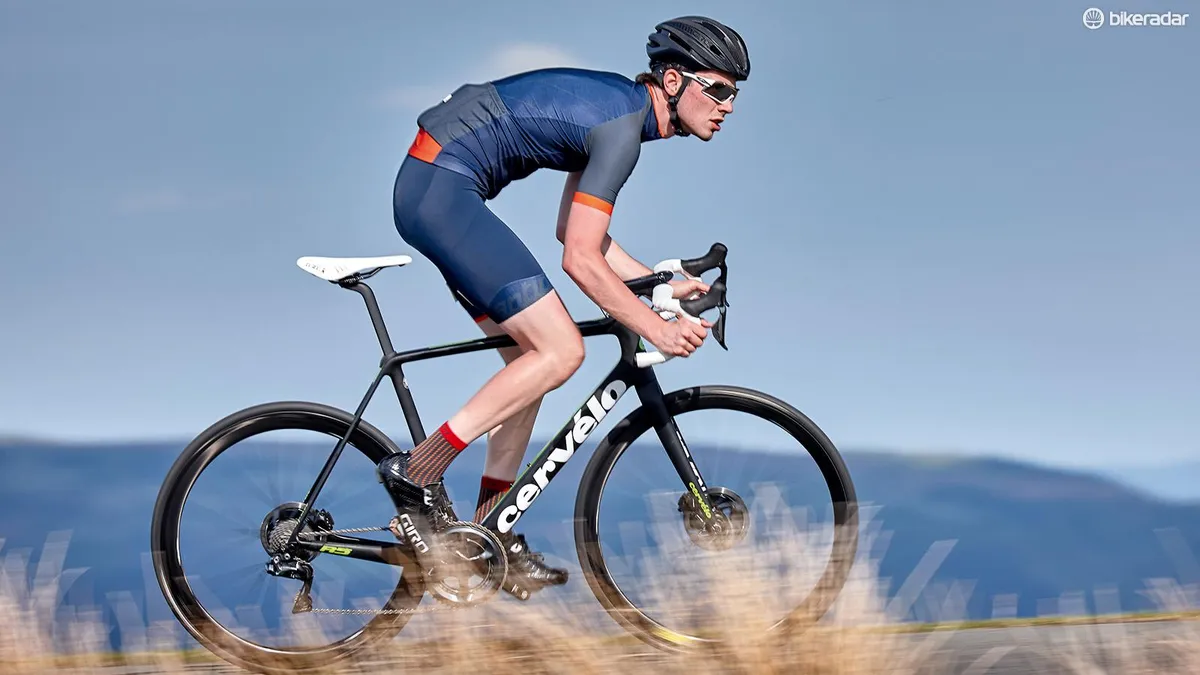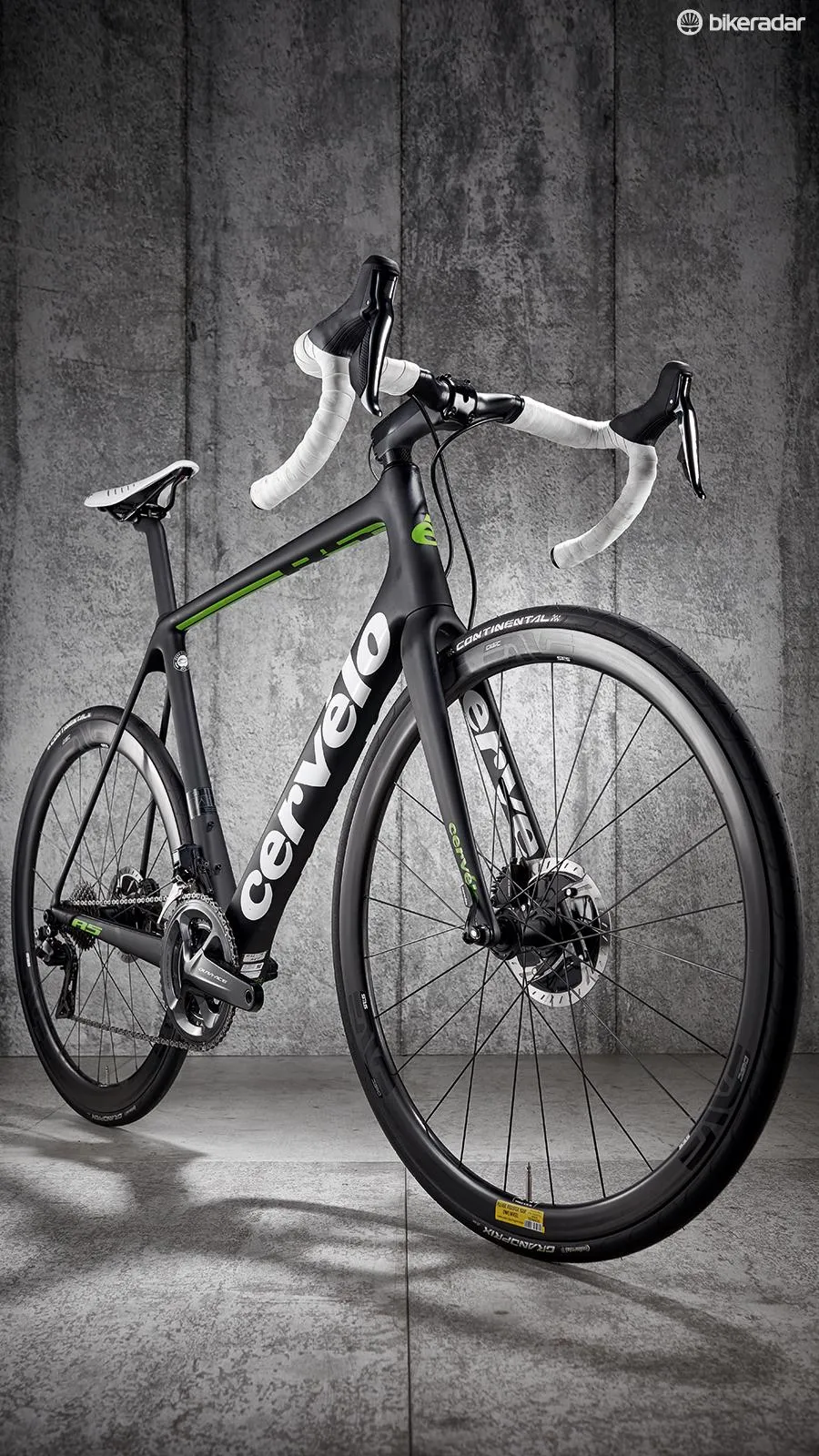The new R5 launched last year, and saw success with a stage win in the Giro d’Italia underneath Dimension Data’s Omar Fraile. The disc version came a little later than the rim-brake revision, with Cervélo hoping this new generation R Series flagship will continue the models’ successes which began in 2003, with the R2.5 winning stages with Carlos Sanchez and Tyler Hamilton and Fabian Cancellara winning Paris- Roubaix on the R3 bike in 2006.
Lightweight for big climbing days, compliant enough to cope with the cobbled classics, the R5 has always been the aero-optimised S5’s — as ridden by Mark Cavendish and Steve Cummings — simpler, more understated cousin.
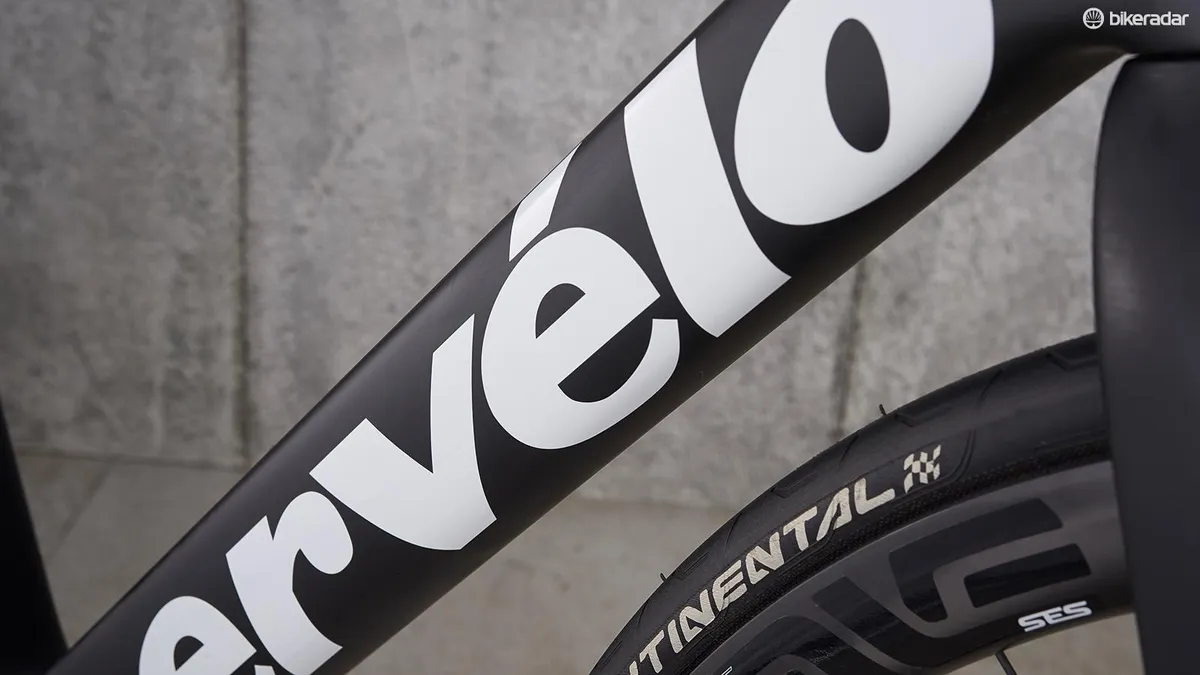
Cervélo has revised the geometry on the R5, making it more race orientated, with the stack dropping by 8mm and getting a little longer reach. Frame stiffness has increased over the previous version, and sees the introduction of Cervélo’s Squoval Max tube shaping — the shape blends a square tube profile with oval corners and curved sides, top and bottom; the Max denotes the improvements made in these structures in terms of weight, stiffness and aerodynamics. The biggest surprise comes in the weight, with the R5 Disc frame just 831g, lighter even than its rim-brake counterpart (850g).
The R5’s details shine through, Cervélo has adopted Focus’s brilliant RAT system, this fast release thru-axle with its T-bar end and quarter-turn lock and unlock is among the best.
Cervélo has taken the design, reworked the adjusting nut to make it a little more minimal, changed the design of the threaded base (to which the T-bar locks into) and changed the location of the spring to give a little more resistance.
Cervélo has partnered with ENVE for the R5’s wheels, and it’s a fine choice with the 3.4 Discs. ENVE varies the depths of its rims, so the rear is deeper at 42mm for maximum aerodynamic benefit, and the front is shallower at 38mm for more stability in crosswinds.
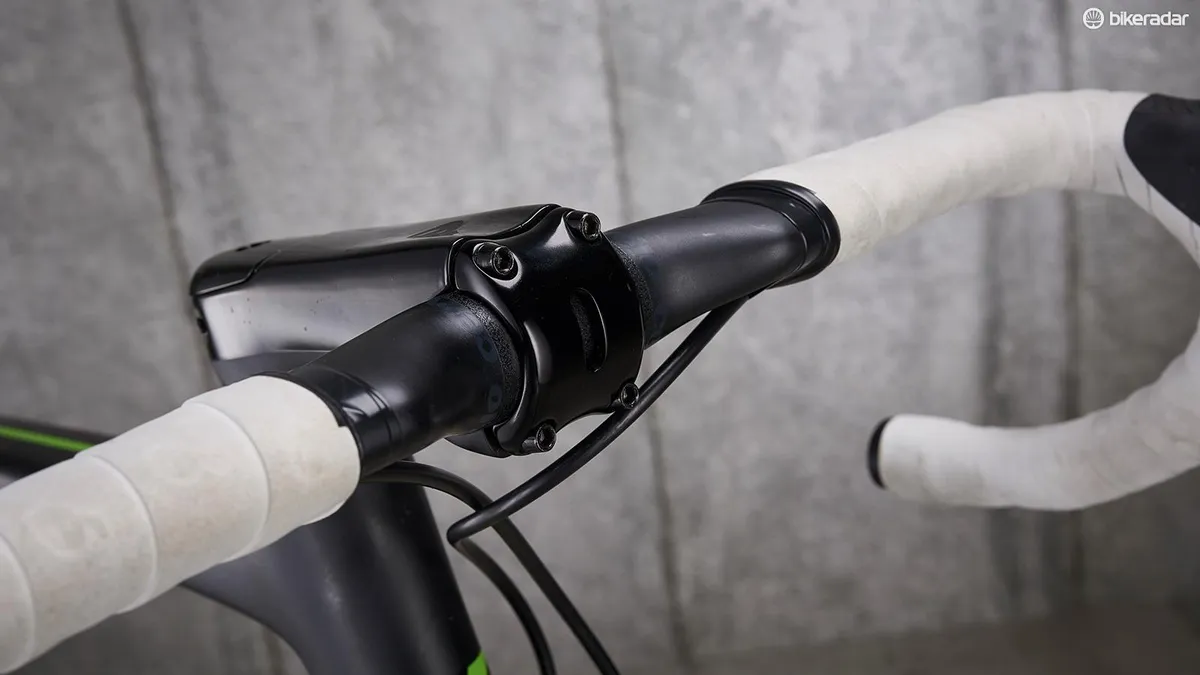
The equipment on the R5 is what you’d expect, with Dura-Ace Di2 again filling the duties on shifting and braking, with 160mm rotors front and rear the brake feel is spot on.
The saddle is Fizik’s well-regarded Antares, but only the base model R5. As saddles are a personal choice I don’t mind that it’s not a carbon-railed fancy edition as it may get swapped.
The tyres are Continental’s Grand Prix rather than the flagship GP4000 S IIs but they feel similar, supple, grippy and proved tough through testing. The new lower front end doesn’t feel overly slammed on my 58cm bike, in fact it feels just right for a bike we’d be happy to ride all day, every day.
The R5 Disc combines a taut feel with positive power transfer, and rock-solid rigidity when pushing hard on the flat, sprinting or heading uphill.
Sit on the saddle, get up on the hoods and push over poorly surfaced roads and the R5 is impressively smooth, the D-shaped carbon post, with its long, laidback head, offers heaps of compliance.
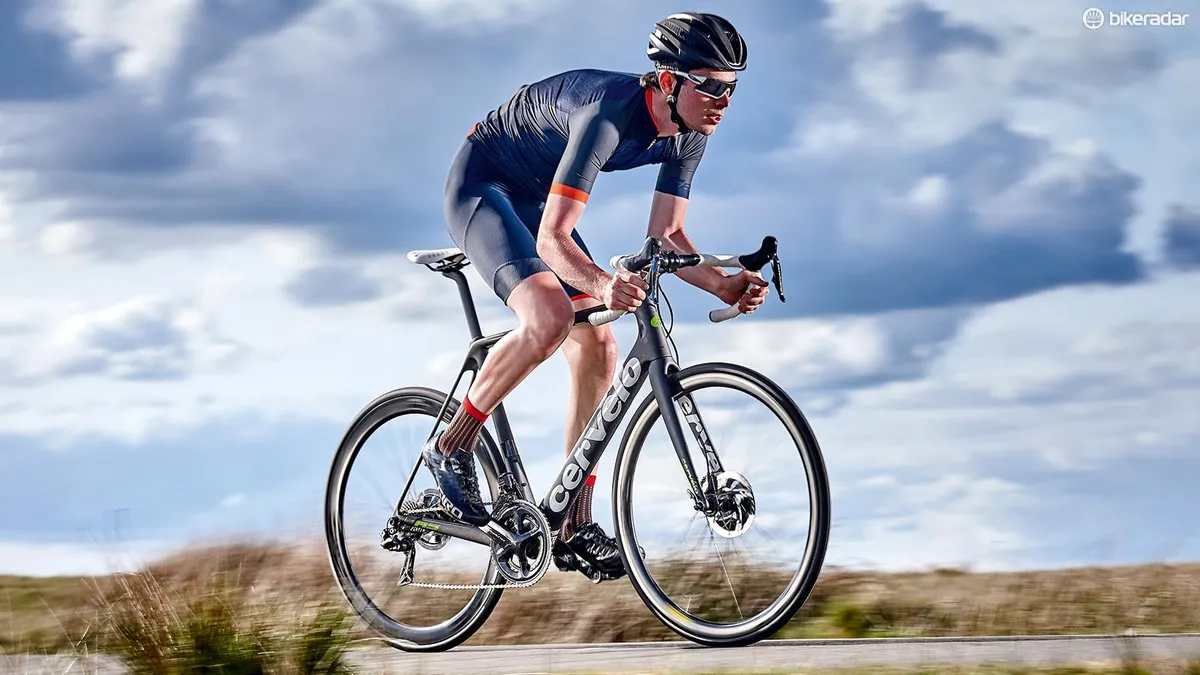
On descents you’ll come away impressed. Steering responses are quick enough to make rapid direction changes yet stable enough to control the bike with simple weight shifts and the slightest steering inputs.
